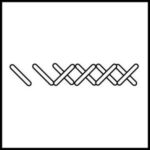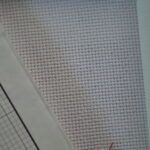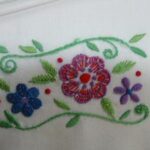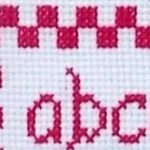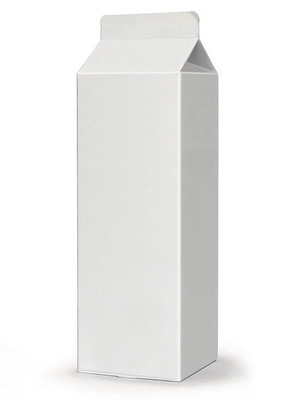If you haven’t been sewing all that long one project you might want to soon try is to stitch on an applique. Appliques are designs which are stitched – by hand or machine – to any number of wearables and accessories. Various fabrics can offer a world of trouble when it comes to attaching an applique. Knowing how to get around these issues will ensure you have a perfect applique every time.
Loose knit fabrics can be quite challenging when attaching an applique. To make this job easier cut a thin piece of fabric to use as a backing. Position the applique on the front of the shirt or other item, position the fabric shape on the underside of the shirt, then pin the two in place. If you want, you can pin the applique on first, then use additional pins to attach the backing.
When sewing with needle and thread it’s best to use a whip stitch to attach the applique. Some appliques have a whip stitch-type border already, and if so, you’ll want to keep your stitches in this particular area. Use thread that exactly or very closely matches the existing whip stitch border. Even if there is no whip stitch border on the applique you’ll still use the whip stitch.
Some appliques are huge, others are tiny and dainty, so you’ll consider the type of applique before deciding on thread, backings, the length of the whip stitches, and other factors. Obviously, you’ll use heavier thread for very thick designs and lighter weights for delicate appliques. Likewise, you’ll use a large needle for thick appliques and a small needle for lace and similar types.
When using a machine to stitch on appliques never start the stitching at the top. Stitch as closely as possible to the edge, using a straight stitch, all the way around. When sewing on certain appliques, like lace, it may be necessary to use a zig-zag stitch which will help secure the intricate designs.
Some appliques are made like patches and are easy to attach. Simply sew around the circular, square or other shape, then back-tack. Other appliques are much more intricate and require a little skill to affix. Use plenty of pins to hold these types in place. Remove each pin as the sewing machine needle approaches. Drop the feed dog and manually guide the applique for sudden curves and other shapes.
Sewing a lace applique onto a lace garment or accessory is especially tricky. It’s often easier to accomplish this by hand stitching rather than machine. Using magnifying eyeglasses is a big help for seeing what threads to catch amongst the two different lace patterns. When finished stitching on the applique, push the needle through to the underside, then make a knot.
If you want to attach an applique, but you simply don’t sew, some appliques can be attached by using fabric glue. The glue is found at any store that sells fabrics and notions. It’s suitable for most fabrics but be sure to read the label before using it on any material. Most fabric glues are washable and most can withstand a home dryer.
Consider the size and weight of an applique before choosing it for the particular project you want to do. Stitching a heavy applique onto a lightweight article of clothing can often cause the clothing to drape or hang in that area. Attaching lightweight appliques to heavy fabric may mean you’ll have to wash the article of clothing on a gentle cycle.
Appliques are beautiful when sewn on anything from clothes to purses. You’ll have a much easier time if you practice with some simple patches and appliques before working your way up to crocheted or lace designs. Use lots of pins to make sure the applique is secure then give it a try. You’ll be pleased with the finished item and you’ll be very proud of your first applique!
